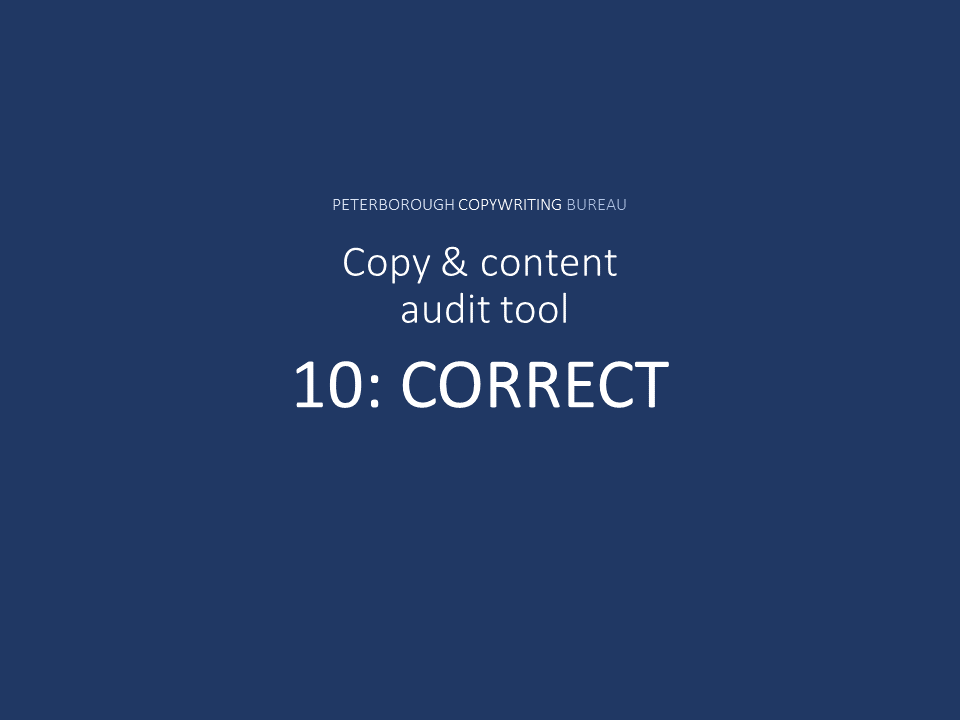When you review a piece of existing content it’s a good opportunity to check it for accuracy. Even content accurate when published can become inaccurate over time.
NOTE: This is part 10 in a ten-part serialisation of my eBook. Please read the introduction first if you are new to the tool.
Even though it was hopefully checked carefully when it was published, mistakes may have been missed, and things that were accurate on publication may now be incorrect.
Some of this is covered under the ‘Context’ section of this audit tool. For example, if a piece of legislation is mentioned you need to check that it’s still relevant and hasn’t been replaced by new legislation. Here are some other things to check:
Links.
Are all the links still working and still pointing to the right place? Don’t send your readers off to 404 error pages.
Contact details.
Check that anyone mentioned as the contact person is still in position, and that any contact email addresses and phone numbers are valid.
Images.
Do you have permission to use any images that are part of the content? Include this step if the content was published at a time when people were using images without permission.
Brand.
If your brand (including your written style guide) has changed since publication, decide whether you want legacy content to follow current guidelines.
Compliance.
If you are in a regulated industry, it’s likely that if any changes have been made to the copy during the audit, it now needs to be re-approved by the compliance team.
Spotting and fixing typos
The audit also provides an opportunity to do another proofread of the copy. A proofread is worth the effort, as typos may have slipped through the net when the piece was published.
As always with proofreading, ideally it should be done by the writer AND someone else, preferably someone who is good at it. Check out my short article on ‘The mistakes that proofreading often misses’ for more help.

